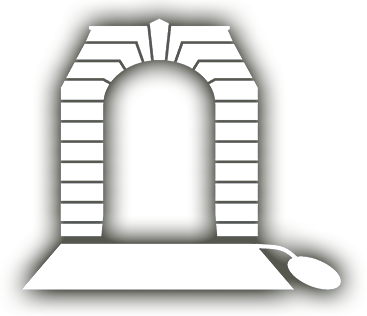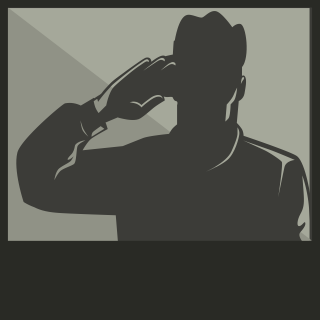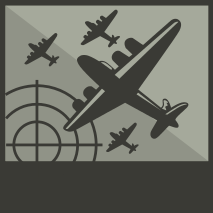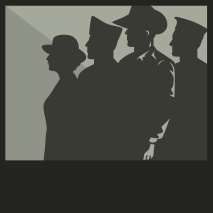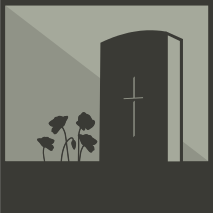Resources
Filter
Media
Document
(Clear)
Use quotes for more accurate searches - e.g., "2/10th infantry battalion"
Showing 50 of 1224 results
-
In Loving Memory Of Fredrick Charles Beloved Husband Of Hilda May Lee & Loving Father of Edna Died 13th March 1944 Aged 49 Years And Emily May Infant Daughter Of Above Died 17th Aug 1923
-
Air Ministry, 22nd July, 1941. ROYAL AIR FORCE The KING has been graciously pleased to confer the Victoria Cross on the undermentioned officer in recognition of most conspicuous bravery:— Acting Wing Commander Hughie Idwal Edwards, D.F.C. (39005), No 105. Squadron. Wing Commander Edwards, although handicapped by a physical disability resulting from a flying accident, has repeatedly displayed gallantry of the highest order in pressing home bombing attacks from very low heights against strongly defended objectives. On 4th July, 1941, he led an important attack on the Port of Bremen, one of the most heavily defended towns in Germany. This attack had to be made in daylight and there were no clouds to afford concealment. During the approach to the German coast several enemy ships were sighted and Wing Commander Edwards knew that his aircraft would be reported and that the defences would be in a state of readiness. Undaunted by this misfortune he brought his formation 50 miles overland to the target, flying at a height of little more than 50 feet, passing under high-tension cables, carrying away telegraph wires and finally passing through a formidable balloon barrage. On reaching Bremen he was met with a hail of fire, all his aircraft being hit and four of them being destroyed. Nevertheless he made a most successful attack, and then with the greatest skill and coolness withdrew the surviving aircraft without further loss. Throughout the execution of this operation which he had planned personally with full knowledge of the risks entailed, Wing Commander Edwards displayed the highest possible standard of gallantry and determination.
-
From the Operational logbook on 16/6/1942 - "On this day the squadron completed a total of 69 operational sorties, totalling 40.50 hours, thus establishing a record for this command. Great credit is due not only to the pilots, who carried out the strenuous duties cheerfully and courageously, but to the ground crew who worked unceasingly thoroughout the day, maintaining the necessary high standard of serviceability..."
-
From the Operational logbook on 16/6/1942 - "On this day the squadron completed a total of 69 operational sorties, totalling 40.50 hours, thus establishing a record for this command. Great credit is due not only to the pilots, who carried out the strenuous duties cheerfully and courageously, but to the ground crew who worked unceasingly thoroughout the day, maintaining the necessary high standard of serviceability..."
-
ANZAC Cove.......... There’s a lonely stretch of hillocks: There’s a beach asleep and drear: There’s a battered broken fort beside the sea. There are sunken trampled graves: And a little rotting pier: And winding paths that wind unceasingly. There’s a torn and silent valley: There’s a tiny rivulet With some blood upon the stones beside its mouth. There are lines of buried bones: There’s an unpaid waiting debt : There’s a sound of gentle sobbing in the South. Poems of Leon Gellert
-
The Last To Leave The guns were silent, and the silent hills had bowed their grasses to a gentle breeze I gazed upon the vales and on the rills, And whispered, "What of these?' and "What of these? These long forgotten dead with sunken graves, Some crossless, with unwritten memories Their only mourners are the moaning waves, Their only minstrels are the singing trees And thus I mused and sorrowed wistfully I watched the place where they had scaled the height, The height whereon they bled so bitterly Throughout each day and through each blistered night I sat there long, and listened - all things listened too I heard the epics of a thousand trees, A thousand waves I heard; and then I knew The waves were very old, the trees were wise: The dead would be remembered evermore- The valiant dead that gazed upon the skies, And slept in great battalions by the shore. For more information use this link: https://vwma.org.au/explore/people/173933
-
There’s a lonely stretch of hillocks: There’s a beach asleep and drear: There’s a battered broken fort beside the sea. There are sunken trampled graves: And a little rotting pier: And winding paths that wind unceasingly. There’s a torn and silent valley: There’s a tiny rivulet With some blood upon the stones beside its mouth. There are lines of buried bones: There’s an unpaid waiting debt : There’s a sound of gentle sobbing in the South. Leon Gellert
-
Place that bayonet in my hand, And fill this pouch with lead; Show me the blood and leave me, and let me Stand By my dead. Cover those staring eyes and go And stab in the red, red rain. Show me that blood and leave me. They groan In the snow. With the pain. Cover his head with a scarlet cloak, And run to your scarlet strife, Show me that blood and leave me, where white Snows choke Out the life. Turn his face to the sanguine skies, The skies where the red stars move. Show me that blood and leave me; a dead man lies With his love.
-
"That just reminds me of a yarn," he said; And look for the body of Lofty Lane He had a thousand yarns inside his head. They waited for him, ready with their mirth And creeping smiles, - then suddenly turned pale, Grew still, and gazed upon the earth. They heard no tale. No further word was said. And with his untold fun, Half leaning on his gun, They left him - dead.
-
"That just reminds me of a yarn," he said; And look for the body of Lofty Lane He had a thousand yarns inside his head. They waited for him, ready with their mirth And creeping smiles, - then suddenly turned pale, Grew still, and gazed upon the earth. They heard no tale. No further word was said. And with his untold fun, Half leaning on his gun, They left him - dead.
-
Be still. The bleeding night is in suspense Of watchful agony and coloured thought, And every beating vein and trembling sense, Long-tired with time, is pitched and overwrought. And for the eye, The darkness holds strange forms. Soft movements in the leaves, and wicked glows That wait and peer. The whole black landscape swarms With shapes of white and grey that no one knows; And for the ear, a sound, a pause, a breath. The hand has touched the slimy face of death. The mind is raking at the ragged past. ……A sound of rifles rattles from the south, and startled orders move from mouth to mouth.
-
Thomas Davidson - who went by [and enjoyed] the nick-name "Jonk" - returned to Campbell Town in 1919. He then wed Alice Clark and together they produced 11 children who all grew strong and healthy. The first three children born were Sylvia, Laurence and Thomas [who went by his second name of Rex]. His nick name even featured in his will- issued in June 1975 - in which he bequeathed his estate to his children. I was given a copy of this will by my father - the above mentioned Laurence [Laurie] Davidson. My earliest memory of my grandfather goes back to 1951 when I was 3 years old. Over the next decade I spent several weeks of school holidays with my grand parents and attended several birthday / wedding type celebrations. Everybody called him "Jonk". His wife, their children, their spouses, the neighbours, members of the Campbell Town rifle club, the footy club and the patrons at the pub in High St. Campbell Town. The use of the nickname "Jonk" was so prevalent that I [and I assume many others] thought that it was his actual name! It seems to be a family tradition to bestow the name of Thomas on a son and then ban the use of it except for official documents. His second son never used the name Thomas - he always went by Rex. My older brother was named Thomas Anthony and has always been known as Tony. So entrenched was the use of the nick-name "Jonk" to identify my grandfather it was used in an obituary for one of his sons who died in April 2019 - some 30 years after Jonk died. In my 71 years I have never heard of any body else called 'Jonk'. At a recent funeral I was told that the nick-name originated with a chap who either had a speech impairment [or mental impairment issues]. Rather than correct the man [perhaps they tried] the nick-name Jonk was embraced by all and sundry - including Jonk! Terry Davidson May 2019
-
Thomas Davidson - who went by [and enjoyed] the nick-name "Jonk" - returned to Campbell Town in 1919. He then wed Alice Lockett and together they produced 11 children who all grew strong and healthy. The first four children born were Sylvia, Laurence Olive (Ollie) and Thomas [who went by his second name of Rex]. His nick name even featured in his will- issued in June 1975 - in which he bequeathed his estate to his children. I was given a copy of this will by my father - the above mentioned Laurence [Laurie] Davidson. My earliest memory of my grandfather goes back to 1951 when I was 3 years old. Over the next decade I spent several weeks of school holidays with my grand parents and attended several birthday / wedding type celebrations. Everybody called him "Jonk". His wife, their children, their spouses, the neighbours, members of the Campbell Town rifle club, the footy club and the patrons at the pub in High St. Campbell Town. The use of the nickname "Jonk" was so prevalent that I [and I assume many others] thought that it was his actual name! It seems to be a family tradition to bestow the name of Thomas on a son and then ban the use of it except for official documents. His second son never used the name Thomas - he always went by Rex. My older brother was named Thomas Anthony and has always been known as Tony. So entrenched was the use of the nick-name "Jonk" to identify my grandfather it was used in an obituary for one of his sons who died in April 2019 - some 30 years after Jonk died. In my 71 years I have never heard of any body else called 'Jonk'. At a recent funeral I was told that the nick-name originated with a chap who either had a speech impairment [or mental impairment issues]. Rather than correct the man [perhaps they tried] the nick-name Jonk was embraced by all and sundry - including Jonk! Terry Davidson May 2019
-
There is an 'urban legend' dating to the 1970s and 80s that the Crimea Cannons were occasionally fired, without authorisation, by Army Reserve soldiers based on the Torrens Training Depot, generally at night when few witnesses were about. The technique was (apparently ) to ram a hand grenade simulator down the bore followed by a rolled up telephone book or a doormat. The resulting explosion would blast smoking bits of shredded phone book across the Parade Ground like pyrotechnic confetti, the boom would echo along the river bank of the nearby River Torrens, seagulls would be startled into flight and random pedestrians would get the fright of their lives. According to the story the cannon fire was on occasion supplemented or replaced by blank fire from several percussion rifles in the upstairs Officers Mess, a fact which seems to narrow the focus on who might have been responsible for these goings on. This practice appeared to die out as the grenade simulators were retired from service (they were probably assessed as a WHS risk) and authorities became less tolerant of the boisterous antics of the local soldiery. .
-
"The last Squadron involved was No. 463, which included pilot William (Bill) Jack Purdy. The Squadron flew Arvo Lancasters, each equiped with ‘14 1,000 pound bombs,’ and on D-Day, attacked the five German naval guns at Point du Hoc. Bill recalls D-Day as ‘a sight to be seen,’ with ‘5,000 small boats and 300 warships’ blanketing the English Channel. It was almost as if he could have ‘put his wheels down and taxied home,’ such was the proximity of the ships clustered together. On D-Day, all of 463 Squadron’s bombs on D-Day were dropped in an area ‘less than the size of a city block,’ completely obliterating the German defences and artillery. Without the success of this critical mission, the American Ranger Assault Group may not have been able to capture Point du Hoc later that day. Bill’s final memory of the mission is returning back to base and eating bacon and eggs, only to be interrupted and sent back into the fighting. Bill flew in a further 36 sorties during the invasion of Normandy. He survived the war, and was awarded the DFC. In 2014, at the age of 90, he flew lead Tiger Moth in the Anzac Day fly over of Sydney Harbour, proving that even 70 years after D-Day, he is still very at home in the air."
-
I mind they told me on a noisy hill I sat and disbelieved, and shook my head: “Impossible! Impossible! but still these other men have died, and others bled”. Knees clasped, I sat and thought, unheeding war. The trees, the winds, the streets came back to me; The laughter of his eyes, his home afar, The memory of his hopes, his buoyancy, His dreams, his jests, his moods of wistfulness, The quaintness of his speech, his favourite song; And this, -and this the end so pitiless! The man we knew! The man we knew so long! - To die-be dead-not move, and this was he! I rose and oiled my rifle musingly.
-
William Leonard East What task is this that so unnerves me now? When pity should be dead, and has been dead. Unloose that sheet from round the pierced brow; What matter blood is seen, for blood is red, And red’s the colour of the clammy earth. Be not so solemn,-There’s no need to pray; But, rather smile, - yea, laugh! If pure, thy mirth Is right. He laughed himself but yesterday. That pay-book? Take it from him. Ours a debt No gold can ever pay. That cross of wood About his neck? That must remain, and yet He needs it no, because his heart was good. We’ll house him ‘neath those broken shrubs; dig deep. He’s tired. God knows, and needs a little sleep.
-
The S.M.S. Emden was a Dresden class light cruiser, was built at the Imperial dockyard at Danzig and launched in July 1909. The vessel was part of the German East Asia squadron, based in Tsingtao, and in 1913 came under the command of Karl von Müller (1873-1923). In a daring but short career of destruction in the opening weeks of the War, the Emden wrought havoc in the Indian Ocean. Between 10 September and her destruction by H.M.A.S. Sydney on 9 November 1914, she had captured or sunk no fewer than 23 ships, including a Russian cruiser and a French destroyer in the battle of Penang on 28 October 1914. The combined value of the captures was estimated at £4 million. Arriving off the Cocos Keeling islands the Emden sent 53 men, under the first officer, Kapitänleutnant Hellmuth von Mücke (1881-1957), ashore to destroy the wireless apparatus at Port Refuge. A wireless message sent before those on the station were overpowered by the Germans was picked up by the Sydney, 52 nautical miles away. The Germans believed they had sufficient time to decommission the wireless station and for the landing party to rejoin the Emden, but with the rapid arrival of the Sydney von Mücke’s men had to be left to their own devices while von Müller attempted to retaliate to the superior firepower of the Sydney. Within the space of an hour the conflict had concluded and von Müller beached the Emden on North Keeling island, raising white flags of surrender. In the battle the Emden lost 133 officers and men killed, out of a crew of 376, while Sydney had four crewmen killed and 13 wounded. Von Müller and his surviving crew were captured and taken to Malta, from where in October 1916 he was taken to England and interned with other German officers at Sutton Bonington, Nottingham. In 1917 he led an escape of 21 prisoners through an underground tunnel, but was recaptured and, as part of a humanitarian prisoner exchange, sent to another camp at Noordwijk-am-Zee, Holland. Von Mücke and his landing party seized a derelict schooner, the Ayesha, made her seaworthy, renamed her Emden II, and escaped the attentions of the Sydney by sailing her to Padang, Sumatra. There, a German freighter transported them to Hodeida, Yemen. After many adventures in the Arabian peninsula, including an overland journey along the Red Sea and battling hundreds of armed Bedouin tribesmen, von Mücke and 48 other survivors arrived in Constantinople in May 1915, from where they returned to Germany as heroes.
-
O_HAYNES.pdf
-
G_G_CROUCH.pdf
-
F_L_BECK.pdf
-
H_CARLYLE.pdf
-
P_BADCOE.pdf
-
P_BADCOE_2_.pdf
-
P_WELLS.pdf
-
D_ENNIS.pdf
-
Avenues-of-Honour-Final-Report-2017.03.24.pdf
-
Colac-Otway-Heritage-Study-Volume-1.pdf
-
Fmr-Primary-School-Ave-of-Honour-East-Bendigo.docx
-
Our-Living-Memorials_Casey.pdf
-
2_40th_Battalion3.ppsx
-
2_40th_Battalion3.ppsx
-
Matron_Elizabeth_Mosey_by_Sophie_Baker.pdf
-
Philip_Kenneth_Ross_Gerecke_by_Tabitha_Zdanowicz.pdf
-
Rowley_Charles_Miller_by_Daisy_Yates.pdf
-
Thomas_Currie__DIver__Derrick_by_Elise_Turtur.pdf
-
W_O_Jose_by_Shreyas_Khanna.pdf
-
Wesley_Choat_by_Lily_Farrell.pdf
-
William_Faint_by_Ryan_Schwarz.pdf
-
William_Harold_Simcock_by_Charli_Medlow.pdf
-
Research_Checklist_WW1.pdf
-
Research_Checklist_WWII.pdf
-
Guide_to_Reading_a_WW2_Service_Record.pdf
-
Flight from Reykjavik, 9 November 1944 At midday on November 9, 1944, a Lockheed Hudson light bomber of the RAF 251 Squadron lifted off from the Royal Air Force station at Reykjavik, Iceland, on a routine meteorological recon patrol. The young crew – three RAF men and two Australians – reported clear icing conditions on the outward leg, and again on the homeward leg of the flight. With over eight hours in the air behind them, headed home, the aircraft sent out an SOS call. A few minutes later, the aircraft key was held down and the station was able to get a bearing: Hudson FK 752 was over the North Sea, just 75 miles from Reykjavik. But there was no further communication. The aircraft failed to return. The wreckage of Hudson FK 752, and the remains of the five young airmen aboard, were never found.
-
OPEN LETTER TO NX 200630 Pte N B Morton 2/1st Australian Infantry Battalion K.I.A. 25.3.45 Dear Doc, We survivors were thrilled to read in The First Post (Oct 1995) that the ‘Neville Morton Drive” off Crescent Head Road has been named after you. Do you remember, the first bad news that day was that the muddy water we had been drinking revealed a dead Jap in it, as the level was lowered. The second bad news was that after you made contact, heavy fire came from the ridge and you wouldn’t answer our many calls to you. “Hec” Bowan came up the track to find you, but was shot next to me, in the arm and leg. Merv Sheen worked his bren well, but Cisco lying behind a tree had the top of his slouch hat shot off. On the order “withdraw”, we all got out without further wounds. Then the coy commander started to order 100 rounds gunfire from the 25 pounders and told us to retreat further. Sgt Frank Upham jumped to his feet and said to the C.C. – “No man moves past this tree until we find Doc Morton”. In true spirit of the AIF the CC apologized to Frank and ordered us “Go back and find Morton”. So four of us crawled back and we did find you Doc. We tied a rope around your leg and dragged you out of the line of fire. Your denture fell out and I put it in my pocket, hoping you would need it, but you were gone, so two of us put you on a stretcher and carried you to the rear, where we dug a grave and buried you and you became a map reference high in those jungle hills. We slept near you that night. Next day, after the artillery fired their 100 round or more we went back up the slope. You never had a chance Doc. The Japs were lined along the ridge, each covering the slope and the track. We even saw some Japs running down the other side. We think one had your hat. You weren’t the last killed in that needless campaign Doc. Willoughby Jackson and 4 others died from Mortars at Karawop, where Snowy Searle had a terrible death from a land mine. Don Carmichael, Eric Bowen and D’arcy McPhillps were also to die. Harry Hughes, Dick Mulholland, Cec Bevan and James each lost his right arm. The 6th Aust Div lost over 600 dead – 443 from battle wounds Even after the war problems continued with at least 4 suicides. The soldier who accidentally killed Bob Morris laid his head on the railway line at Chatswood. Doubt you’ll ever get this letter Doc, but we survivors remember: we’ve had fifty more years than you. Cheerio Doc, may meet you soon, your old comrade in arms arms, Bren No 5535 (2/1 Inf Bn) What colours we had – Black over Green! What a leader – P.A. Cullen! From 1RAR Website
-
'For conspicuous skill and courage during a daylight operation, when he advanced with his platoon and captured an enemy post. To cover consolidation he pushed his Lewis gun forward under heavy fire. In spite of losing the whole crew, he kept his gun in action, silencing one enemy machine gun and keeping down the fire of two others, thus enabling his platoon to consolidate in time to resist a heavy counter attack.' Source: 'Commonwealth Gazette' No. 31 Date: 4 March 1919
-
'During the operations at POLYGON WOOD, east of YPRES on 20th September, 1917, Pte. BATES showed great bravery and devotion to duty when, as an observer, he moved out in front of the Battalion and there, by his determination to hang on and his personal disregard of personal safety, he gained and sent back much useful information as to the enemy's movements on his positions of assembly.' Source: 'Commonwealth Gazette' No. 31 Date: 7 March 1918 Although the citation cites Polygon Wood, this was the limit of exploitation of the Battle of Menin Road. A subsequent battle commencing 26 Sep is known as the Battle of Polygon Wood.
-
For gallantry and devotion to duty on 29th September 1918, at Bony, when he was in charge of a party of tunnellers clearing and maintaining a forward road under heavy enemy shell and machine gun fire. Although, owing to infantry being held up heavy casualties were occurring, he carried through the work, and set a fine example of coolness and resourcefulness to those under him.' Source: 'Commonwealth Gazette' No. 10 Date: 29 January 1920
-
An impressive ceremony marked the un- veiling on Sunday by Brigadier-General Leane of a fallen soldiers' memorial at Magill. Thirty-three of the men who en- listed from the district made the supreme sacrifice. The monument stands in a portion of the Magill School grounds. It is an anistically designed marble stone, and bears the names of the dead. The money for tbe work was raised by public subscription at the suggestion of the Magill Progressive Association, the sec- retary of which (Mr. I. Simcock) did most of the organising work. A large crowd witnessed the service. A cordon was formed around the memorial by a party of returned soldiers from Magill, under W. O.Walker. D.C.M., M.M. and bar, and a company of senior cadets, in charge of Lieutenant Rowe. The chairman of tbe Burnside District Council (Mr. J. A. Harper) said a flagpole and a Union Jack had been presented to the school by three local rejected volun- teers, Messrs. J. Dalby, W. Cooke. and F. Warner. The pole had been placed in the scbool yard immediately to the rear of tbe memorial. In handing them over to the school Mr. Harper referred to the great things for which the Union Jack, stood. The schoolmaster (Mr. Scott) accepted the gift. Brigadier-General Leane, in unveiling the monument, said in the war the Australian had proved himself both a fine soldier and a man. (Applause.) France had paid her mark of respect to the gallant men from the Commonwealth at Amiens, and had proved that she placed the Australian soldiers on an equality with her own (Applause.) In Whitehall, London, there was a Cenotaph in memory of the glorious dead of England and the Dominions, and whenever a man passed it he raised his hat. It had struck him that afternoon in connection with the Magill memorial that it would be a good thing if the chil- dren of the school in passing in and out paid similar tribute to the departed men who fought for them. (Applause.) As the covering from the memorial was removed the "Last Post" was sounded. Mr. W. A. Hamilton, M.P., on behalf of the Minister of Edncabon, accepted the gift. The Speaker of the Assembly (Hon. F. W. Coneybeer) said the memorial would be a record for all time of the heroic sacrifices made by some of the towns- people of Magill, and it would stand as a perpetual reminder of the devotion of Aus- tralia's sons. During the afternoon selections were played by the Magill Band, and floral tri- butes to the departed men were placed upon the monument, wich was prepared by Messrs. Maddaford & Polkinghorne, of Adelaide.
-
The long awaited news of the re-lease, as a P.O.W, of their younger son, Warrant Officer Rhys Roberts, R.A.A.F., has been received by Mr and Mrs K. R. Roberts., of Kadina. On Monday, a cabled message received stated that he had arrived in Liverpool, England, on 15th and was "fit, well and cheerful." This message must be most assuring to his parents after his varied experiences, for more than once his life has been in jeopardy. He was taken a prisoner of war in October, 1942, and previous to that, was shot down in Tobruk. When captured at El Alemein, he was the only survivor of his plane, and had received injuries when bailing out of the burning machine. After being a patient in a front line hospital, he was conveyed to Austria via Greece and Italy, and was a prisoner in three different camps in Germany. His final place of custody was Stalag No 3 in East Prussia, and during transit there, had three days in Berlin. During the time spent in this camp he lectured on sheep and wool, his education proving beneficial to him. He commenced his early studies at St. Peters College, Adelaide, and, on returning to the Kadina High School, won a scholarship for Roseworthy College where he studied for three years. When he will arrive home is not yet known. Kadina and Wallaroo Tines Fri 22 Sep 1940
Page 13 of 25
This page is supported by a grant from the ANZAC Day Commemoration Council

